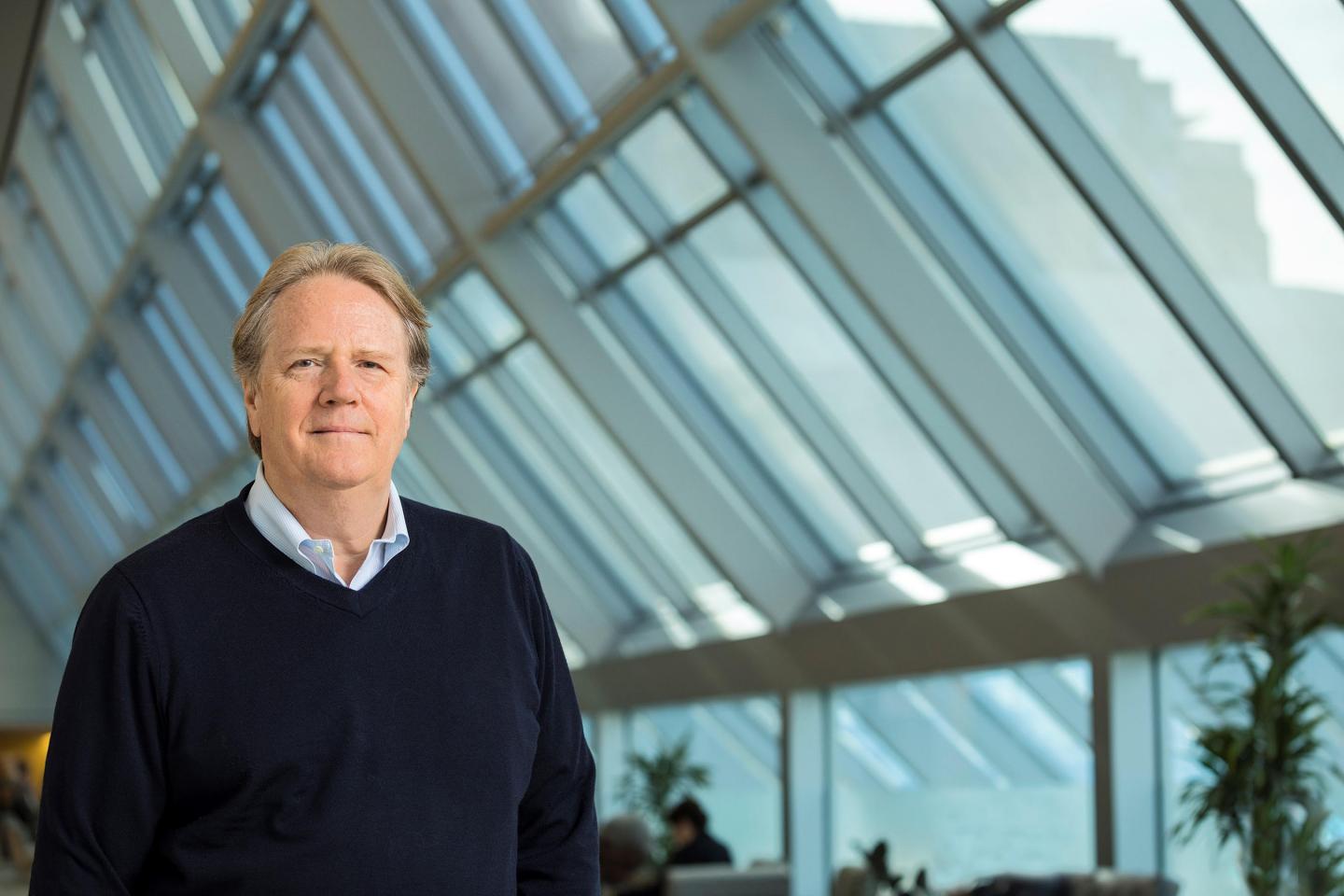$30 million contract will establish TB immunology research centers across the country

Credit: Case Western Reserve University
CLEVELAND (October 23, 2019)–Tuberculosis (TB) is the number-one cause of death from an infectious disease in the world: In 2017, the most recent data available, 10 million people developed TB and 1.6 million died.
Today, nearly 1.7 billion people globally are infected with Mycobacterium tuberculosis (Mtb), a germ spread by airborne transmission. Between 5% and 10% of those infected will develop TB, according to the National Institutes of Health (NIH).
W. Henry Boom, MD, and a team of collaborators nationally received the first installment of a seven-year contract, totaling $30 million in its first year from the National Institute of Allergy and Infectious Diseases of the NIH, to establish three immunology research centers to accelerate TB vaccine development.
Boom, director of the TB Research Unit and professor of medicine at the Case Western Reserve University School of Medicine and chief of the Division of Infectious Diseases & HIV Medicine at University Hospitals Cleveland Medical Center, is one of three co-principal investigators (PI) for the program.
Additional co-PIs for the program are Sarah Fortune, MD, professor at the Harvard T.H. Chan School of Public Health, and JoAnne Flynn, PhD, professor at the University of Pittsburgh. As the team reaches its milestones, the contract will amount to $60 million over seven years.
The research centers are called “Immune Mechanisms of Protection against Mycobacterium tuberculosis (IMPAc-TB) Centers.” The IMPAc-TB program aims to make an impact on a global scale by accelerating TB vaccine development.
Researchers will study immune responses needed to prevent initial infection, establish latent infection, and transition to active TB. Every aspect of research from basic, to translational, to clinical science will be involved in this project.
“Our purpose is to breakdown the silos that exist between basic science and translational sciences and animal models and human disease,” Boom said. “My collaborators will use cutting-edge molecular and cell biology as well as animal models, and my role will be to build on that research at a global, human scale with clinical studies in London, Uganda and South Africa.”
Because TB isn’t prevalent in the United States, human research must have a global footprint, Boom said. However, this approach will also provide the team access to regional variations in data. And because TB is an essential piece of the HIV epidemic, an additional goal of the program is to understand the effects of co-infections like HIV on immune responses to Mtb infection or TB vaccines, he said.
“Collaboration was essential for receiving this contract,” Boom said. “Case Western Reserve has been partnering with Makerere University in Uganda for more than 30 years, and working together with UH to advance tuberculosis research on a global scale.”
Other members of IMPAc-TB’s CWRU/UHCMC research team include Drs. John Johnson, Richard Silver and Cathy Stein and Drs. Moses Joloba, Harriet Mayanja and William Worodria of the Uganda-CWRU Research Collaboration.
Boom said TB continues to be a problem because it disproportionately affects the economically disadvantaged and underserved in crowded, urban settings.
“The global partnership between our medical school, academic medical center and Uganda is very important,” he said, “as we discover what’s driving this epidemic and work to reach underserved populations that have poor public health.”
###
This project has been funded by the National Institute of Allergy and Infectious Diseases, National Institutes of Health, Department of Health and Human Services, under Contract 75N93019C00071.
About Case Western Reserve University
Case Western Reserve University is one of the country’s leading private research institutions. Located in Cleveland, we offer a unique combination of forward-thinking educational opportunities in an inspiring cultural setting. Our leading-edge faculty engage in teaching and research in a collaborative, hands-on environment. Our nationally recognized programs include arts and sciences, dental medicine, engineering, law, management, medicine, nursing and social work. About 5,100 undergraduate and 6,700 graduate students comprise our student body. Visit case.edu to see how Case Western Reserve thinks beyond the possible.
About University Hospitals / Cleveland, Ohio
Founded in 1866, University Hospitals serves the needs of patients through an integrated network of 18 hospitals, more than 50 health centers and outpatient facilities, and 200 physician offices in 16 counties throughout northern Ohio. The system’s flagship academic medical center, University Hospitals Cleveland Medical Center, located in Cleveland’s University Circle, is affiliated with Case Western Reserve University School of Medicine. The main campus also includes University Hospitals Rainbow Babies & Children’s Hospital, ranked among the top children’s hospitals in the nation; University Hospitals MacDonald Women’s Hospital, Ohio’s only hospital for women; University Hospitals Harrington Heart & Vascular Institute, a high-volume national referral center for complex cardiovascular procedures; and University Hospitals Seidman Cancer Center, part of the NCI-designated Case Comprehensive Cancer Center. UH is home to some of the most prestigious clinical and research programs in the nation, including cancer, pediatrics, women’s health, orthopedics, radiology, neuroscience, cardiology and cardiovascular surgery, digestive health, transplantation and urology. UH Cleveland Medical Center is perennially among the highest performers in national ranking surveys, including “America’s Best Hospitals” from U.S. News & World Report. UH is also home to Harrington Discovery Institute at University Hospitals – part of The Harrington Project for Discovery & Development. UH is one of the largest employers in Northeast Ohio with 28,000 physicians and employees.
Advancing the Science of Health and the Art of Compassion is UH’s vision for benefitting its patients into the future, and the organization’s unwavering mission is To Heal. To Teach. To Discover. Follow UH on LinkedIn, Facebook @UniversityHospitals and Twitter @UHhospitals. For more information, visit UHhospitals.org.
Media Contact
Bill Lubinger
[email protected]
216-368-4443





